
Studies have also shown that “noise annoyance” also impacts our mental health.(Illustration: CNA/Samuel Woo)
In a room of 13 random women, one will be diagnosed with breast cancer in her lifetime. The most common cancer for Singaporean women, breast cancer accounts for 29.7 per cent of all cancers diagnosed in females.
On an uplifting note, medical advancements have ushered in a new era of precision and convenience in the realm of breast care. One-stop breast health specialist Solis, in collaboration with the radiology and pathology services at Luma, is making strides in the diagnosis and treatment of breast cancer. With modern technology and multidisciplinary expertise consolidated in one location, patients benefit from seamlessly integrated, personalised breast care delivered in a safe and affirming environment.
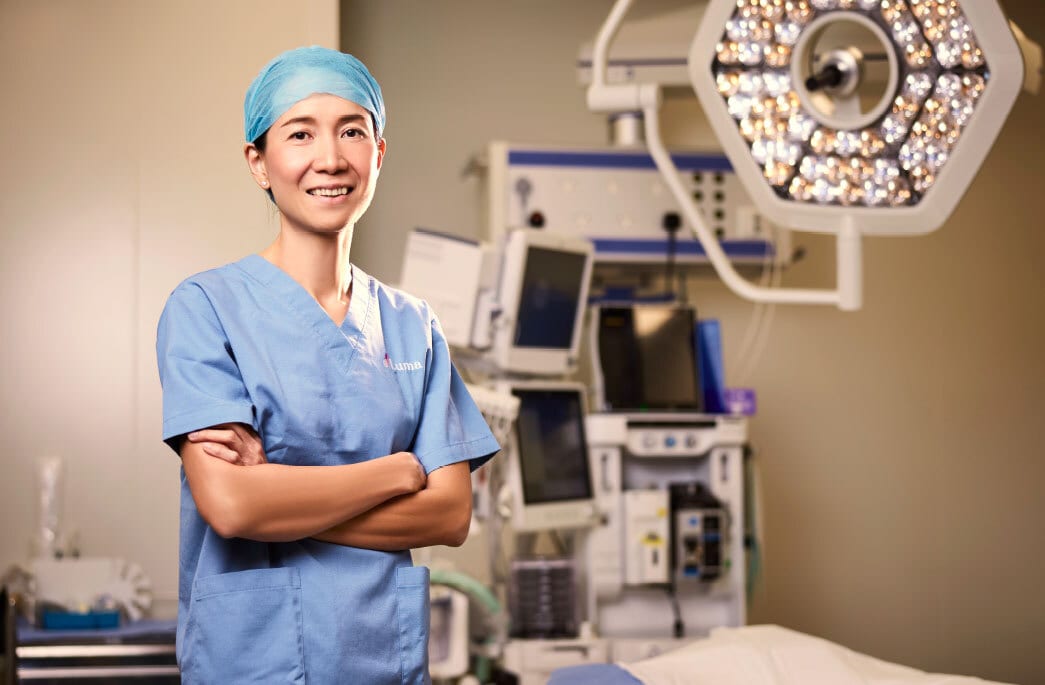
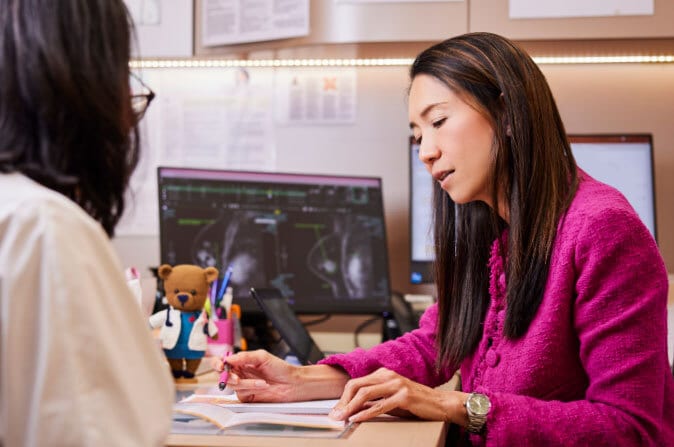
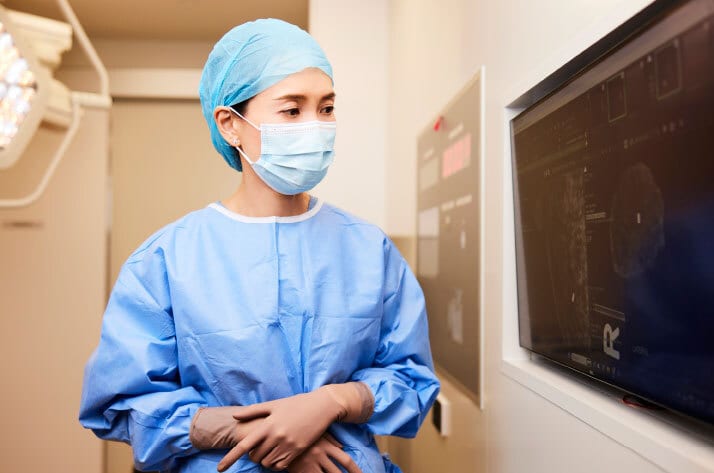



In 2021, Dr Esther Chuwa left her solo practice to join hands with six other female surgeons who shared her vision of an integrated breast care centre, culminating in the establishment of Solis.
Recognising the challenges patients faced with fragmented healthcare services, the founding team devised a comprehensive one-stop outpatient model to expedite diagnoses and streamline treatment plans. “I was heartened by the integrated care offered at Solis, where surgeries, imaging diagnostics and consultations are located under one roof,” said Ms JS Ong, a patient of Dr Chuwa’s.
Solis’ specialised focus has attracted international partners keen to conduct local trials of new tests and equipment – the collaboration facilitates access to innovative technologies for Solis patients. This is complemented by the dedicated expertise of Solis’ oncology expert partners, who jointly discuss treatment recommendations for each patient during the centre’s weekly multidisciplinary tumour board sessions.
“This ensures that patients are given best practice recommendations, without them having to navigate multiple opinions on their own,” explained Dr Chuwa.
Each day is intense yet rewarding, with clinic consultations involving both education and decision-making. I use a lot of visual presentations to educate my patients about their condition. Having access to reliable knowledge dispels fears and steers indiv

Procedures such as biopsies, lumpectomies (the excision of breast lumps) and mastectomies are carried out at the Day Surgery Operating Theatre at Luma.
In the event of a cancer diagnosis, Dr Chuwa believes in getting patients started on treatment promptly and supporting them in their journey: “My role is to help patients understand their cancer, what is needed to combat it and to fight alongside them.”
Dr Chuwa added that the belief that all breast cancers are treated the same way – with mastectomies and chemotherapy – is now a thing of the past. Rapid advances in medical research have identified different breast cancer subtypes, enabling more targeted treatments and tailored surgeries.
With patients’ concerns and emotional well-being in mind, she specialises in oncoplastic breast conserving surgery, in which plastic surgery techniques are utilised in breast cancer removal, resulting in improved appearance of the breast without compromising recovery outcomes.
“Breast conserving surgery is associated with better overall psychological adjustment, as patients’ appearance and self-esteem are preserved in addition to successful cancer treatment,” said Dr Chuwa.
In the event of a cancer diagnosis, Dr Chuwa believes in getting patients started on treatment promptly and supporting them in their journey: “My role is to help patients understand their cancer, what is needed to combat it and to fight alongside them.”
Dr Chuwa added that the belief that all breast cancers are treated the same way – with mastectomies and chemotherapy – is now a thing of the past. Rapid advances in medical research have identified different breast cancer subtypes, enabling more targeted treatments and tailored surgeries.
With patients’ concerns and emotional well-being in mind, she specialises in oncoplastic breast conserving surgery, in which plastic surgery techniques are utilised in breast cancer removal, resulting in improved appearance of the breast without compromising recovery outcomes.
“Breast conserving surgery is associated with better overall psychological adjustment, as patients’ appearance and self-esteem are preserved in addition to successful cancer treatment,” said Dr Chuwa.
TAILORING TREATMENT TO HER FAMILY PLANNING NEEDS
SP, in her early 30s, received a diagnosis of an aggressive yet localised breast cancer. Initially advised to undergo a radical mastectomy (complete breast removal) – a daunting prospect for the newlywed – SP consulted Dr Chuwa for alternative options.
BEYOND THE SURFACE
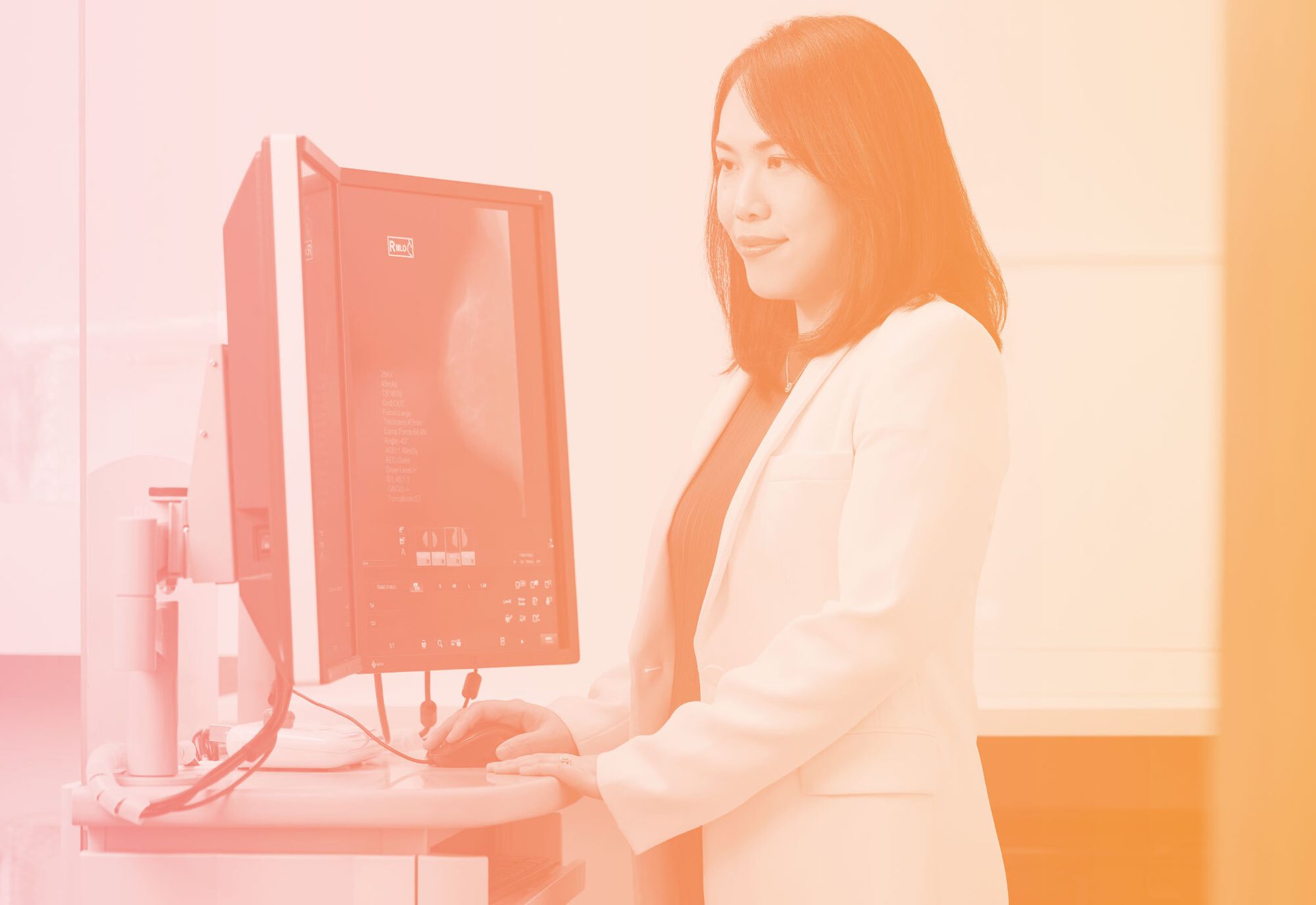
Sophisticated screening methods for greater clarity
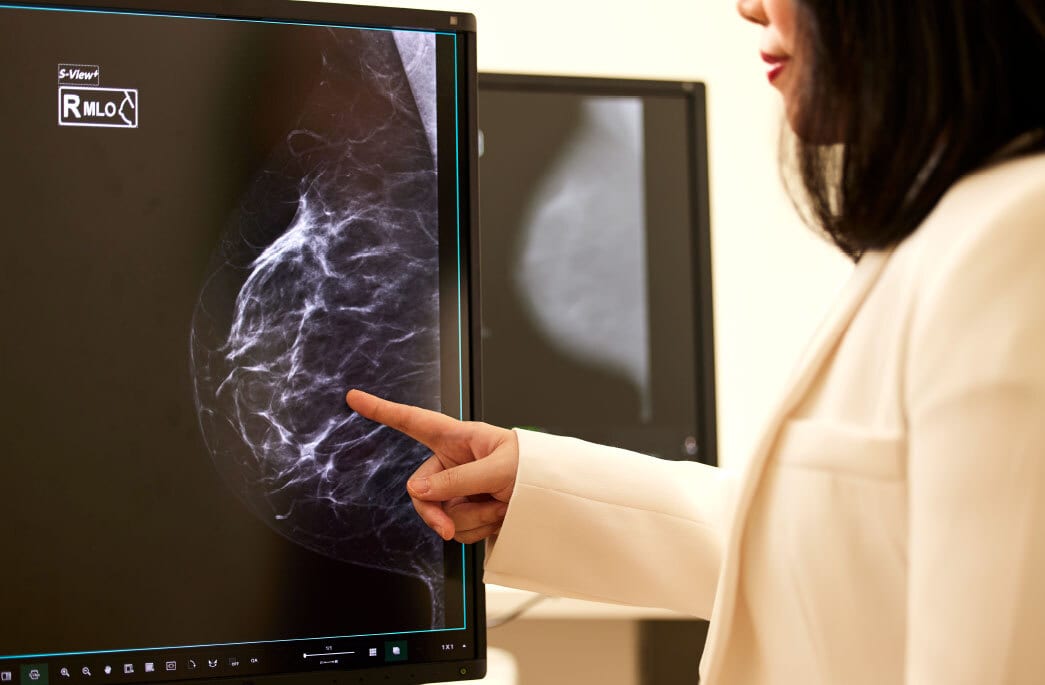
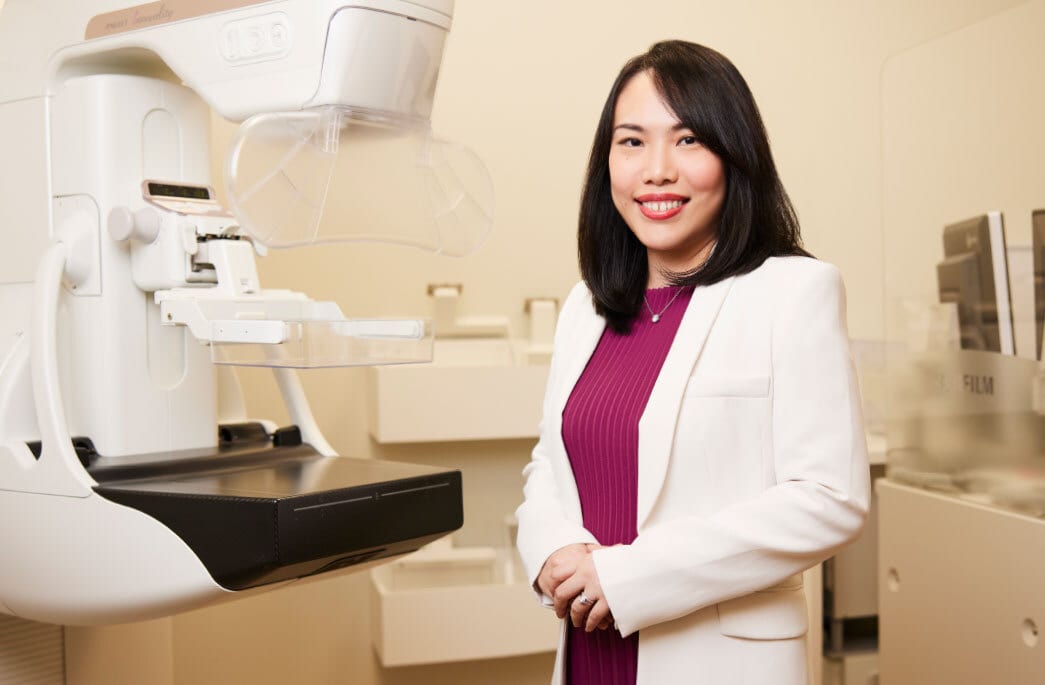
“In the field of breast radiology, the more time and training spent examining and interpreting breast images, the more proficient one gets,” said Dr Sonia Lee, a consultant radiologist at Luma Women’s Imaging Centre.
Specialised breast radiologists like Dr Lee are not only trained to interpret images and conduct complex breast biopsies under imaging guidance, they are also skilled in identifying subtle presentations of cancer, resolving challenging cases and leveraging technologies to benefit patients.
These include 3D mammograms, also known as digital breast tomosynthesis. While studies have shown that women in Singapore often put off mammograms due to fear of the discomfort associated with the procedure, 3D mammograms use a flexible compression paddle that gently fits the natural curve of the breast, dispersing pressure evenly and requiring less force than standard 2D mammograms.
No two days are alike. The majority of my day is usually spent reporting mammograms, ultrasound and MRI scans. I also perform various procedures such as biopsies and pre-operative localisations (the marking of tumours) alongside our breast surgeons.
Luma’s rigorous dedication to accuracy has benefited patients such as AC, a young woman in her 30s, who sought a second opinion from Luma and Solis for a breast lump.
“She had received distressing news of a breast cancer diagnosis after an assessment overseas,” recalled Dr Lee. “We reassessed all of her external images and pathology slides, which turned out to be discordant with her original diagnosis.”
The patient’s decision to redo the imaging studies and breast biopsy at Luma was the right one: “Her breast lump turned out to be benign – this was good news for the patient and her care team.”

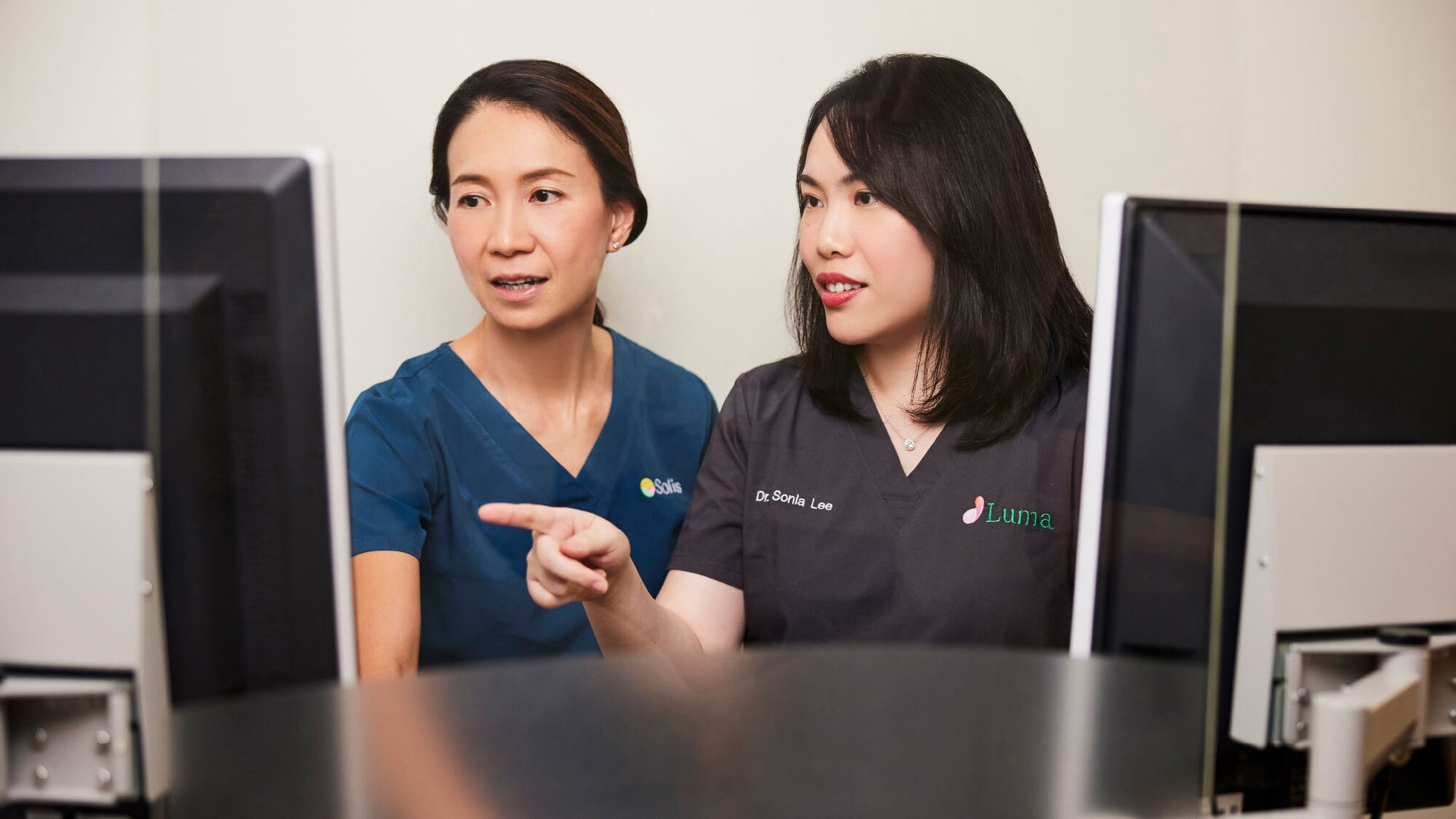
Dr Chuwa (left) and Dr Sonia Lee, consultant radiologist, Luma Women’s Imaging Centre, discuss a patient’s scan.
Research-based innovation
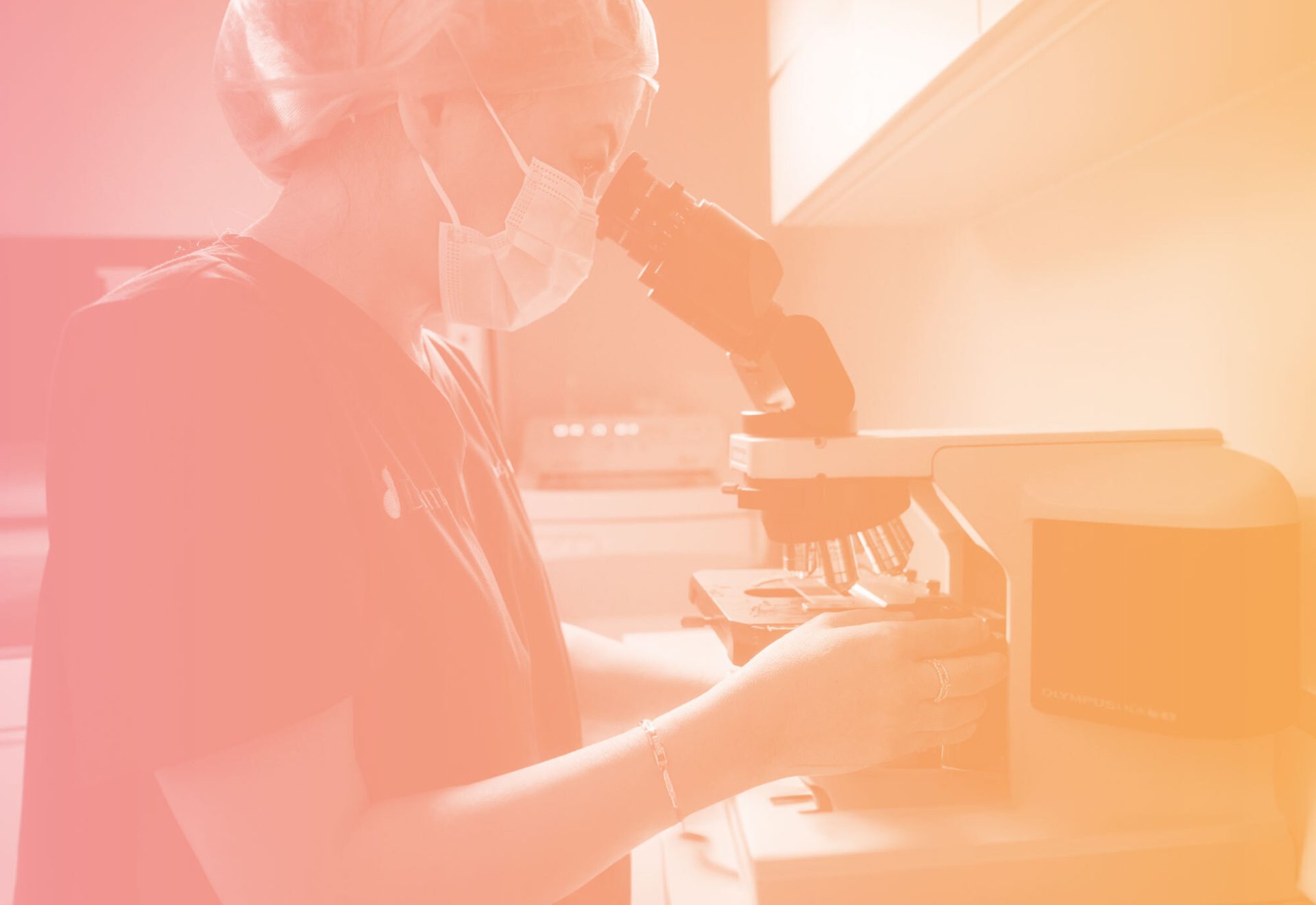 Elevating patient care through academic exploration
Elevating patient care through academic exploration
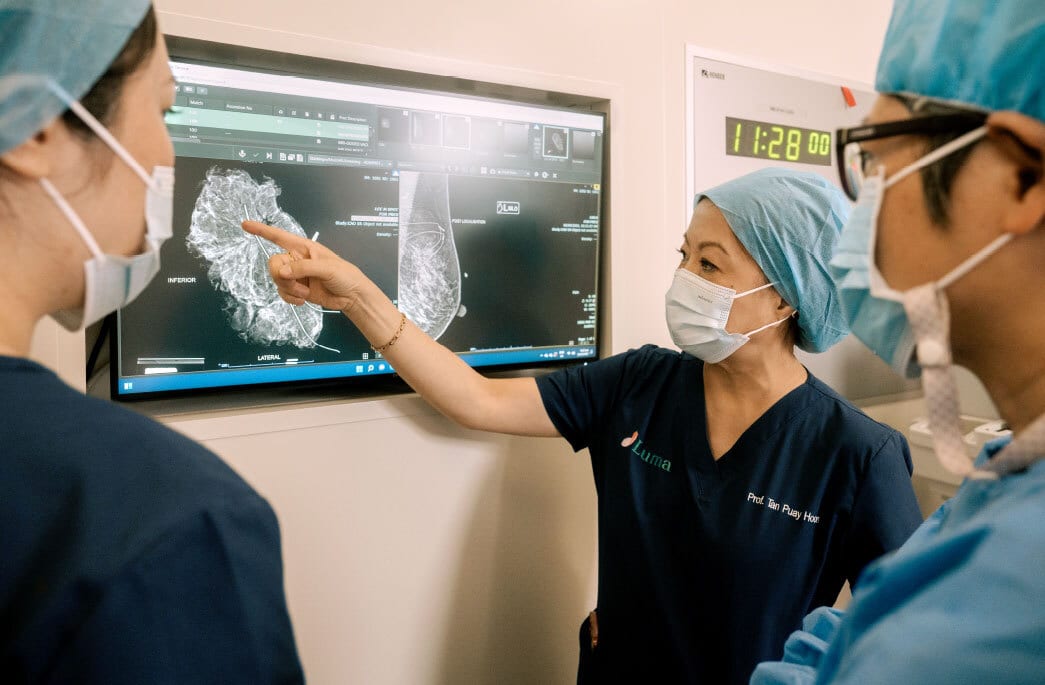
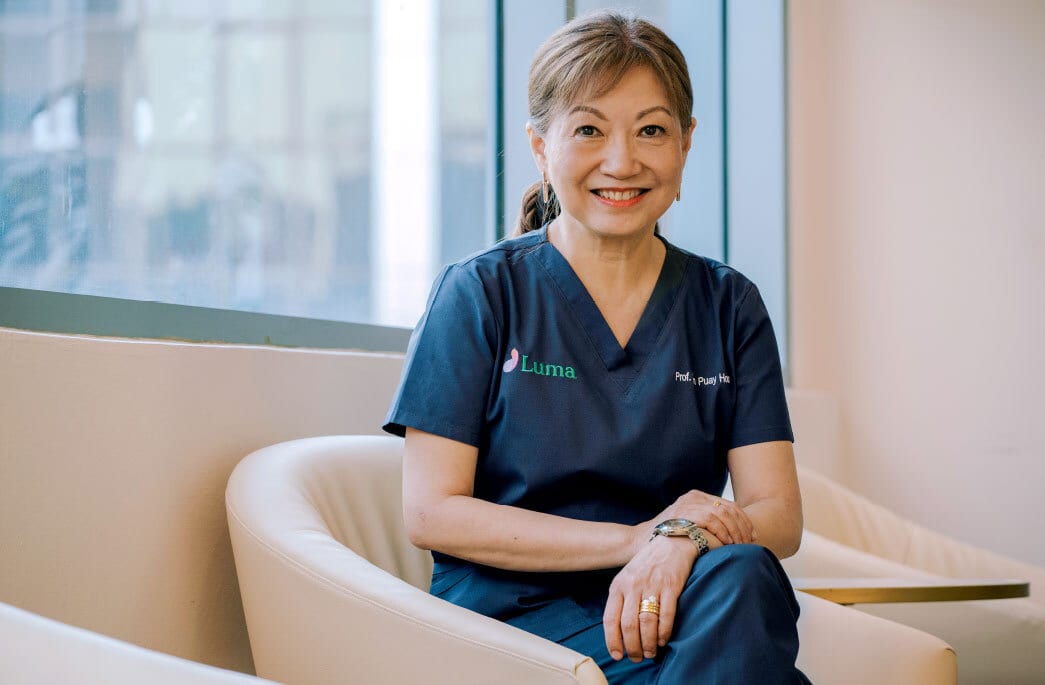
In the battle against breast cancer, understanding the disease’s characteristics can be pivotal to overcoming it.
Professor Tan Puay Hoon, a pathologist at Luma Medical Centre, highlights the intricate nature of breast pathology, which focuses on studying and diagnosing breast diseases, particularly breast cancer.
A seasoned academic in breast pathology, Prof Tan heads the Evidence Gap Mapping Project for the WHO Breast Tumour Classification volume under Luma’s recent Consortium Agreement with the World Health Organization. The project identifies existing evidence in breast tumour classification and highlights knowledge gaps, encouraging researchers to focus on bridging informational lapses.
“My academic engagement ensures I stay current with the latest information in breast pathology, enabling me to make accurate diagnoses and contribute effectively to the multidisciplinary team responsible for formulating patient treatment plans,” said Prof Tan.
At Solis and Luma, patients benefit from a distinct advantage: Real-time pathological assessment of surgical specimens during procedures.
“For breast cancer patients, frozen sections are typically used to assess sentinel lymph nodes in the armpit to determine if cancer cells have spread there, and for evaluating tissue margins,” noted Prof Tan. “Intraoperative margin assessment (a technique used to check tissue edges for cancer involvement) ensures that patients can often be treated effectively with a single surgery.”
A typical day involves reporting the pathology of breast specimens, discussing challenging cases with colleagues, providing frozen section diagnoses and participating in tumour boards. I also work on collaborations with international partners, preparing l
By examining frozen sections of sampled tissue, pathologists can assess the margins of the tumour on the spot.
By examining frozen sections of sampled tissue, pathologists can assess the margins of the tumour on the spot.
If abnormal cells are detected, more tissue is immediately removed by the surgeon, who aims to preserve as much healthy tissue as possible.
With you, on your breast care journey
Solis and Luma simplify breast care by offering all essential services under one roof, making it less daunting and more accessible for patients. Guided by innovative techniques and experienced specialists, Solis and Luma seek to empower patients to take the first step to better breast health, with confidence.














